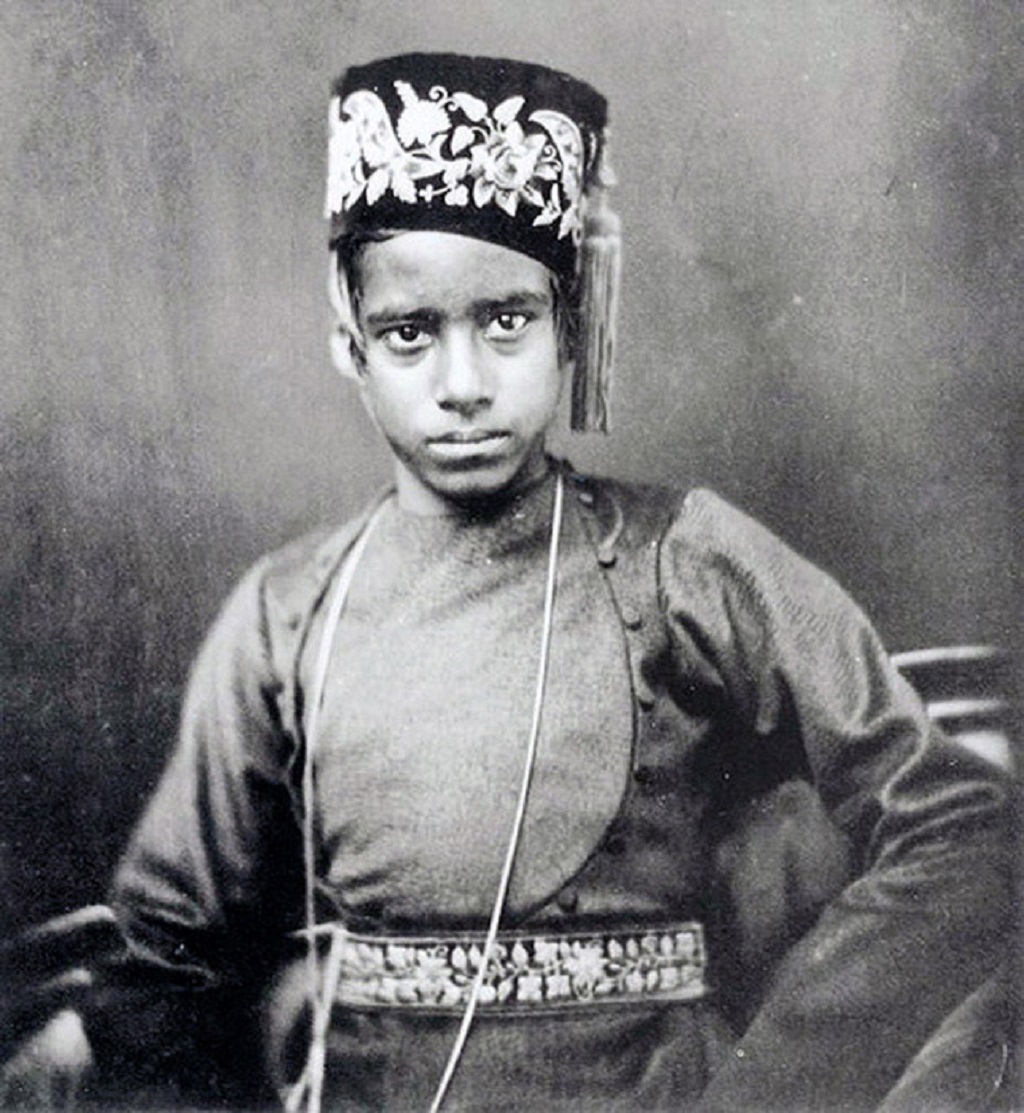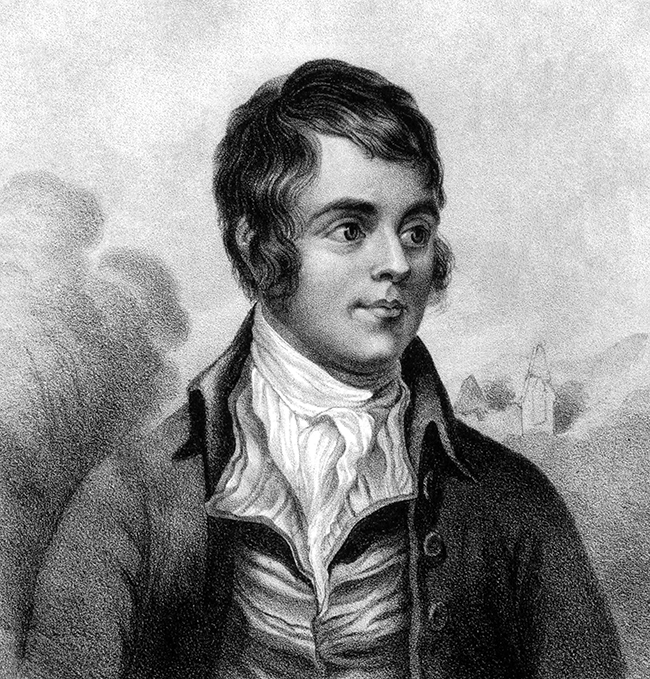You may have recently found yourself humming some of the Bard’s best-known songs.
If not, then it is possible that you may have sung Auld Lang Syne at Hogmanay. Such is the song’s global appeal, that were you to visit India, you would probably think that there, too, the locals are singing Burns’ famous song.
But you would be mistaken. What they are singing is Purano Shei Diner Kotha, a song written by India’s national bard, Rabindranath Tagore, set to Burns’ music.
How this came to pass illustrates the deep connections between Scotland and India, and tells the story of two men, born a century and over 5,000 miles apart, who became icons in the countries of their birth.
Tagore was born in Kolkata, then called Calcutta, in 1861 into a wealthy family home that was filled with western books and the sound of classical music. He began writing poetry aged eight and continued to write throughout his life, leaving behind an enormous legacy of plays, poems and novels.
Unusually, he wrote the national anthems for India and Bangladesh while his work also inspired Sri Lanka’s national anthem. Considered India’s most important poet and writer, Tagore was once well known in the West but has fallen out of favour so that today his work is rarely heard. That, however, may be about to change.
The actor and writer Nigel Planer is currently adapting Tagore’s plays and has been a fan for many years. ‘I first heard of him when I was at university in the 1970s, where we studied a group of groovy authors and new hippy-type writers, and he was mistakenly lumped in with them.

A young Rabindranath Tagore
‘Later I went to India on my own and heard more about him and I’ve been interested ever since.’
And interest is growing with a new Scottish Centre of Tagore Studies established as part of Edinburgh Napier University, which has been looking at the similarities between the Indian writer and Burns.
Although the two men never met – Tagore was born over 100 years after Burns – Tagore would have been very familiar with the Scots and Scotland. Lord Bruce, whose great grandfather and great-great-grandfather, were Viceroys of India, is chairman of the Kolkata Scottish Heritage Trust. He is certain that the Tagore family, going back decades, would have been influenced by, and involved with, Scots.
‘Tagore’s grandfather, Dwarkanath Tagore, was a colossus in the trading business,’ said Lord Bruce. ‘During the first half of the 19th century, Scots dominated trade between India and Scotland, mainly down to the influence of Henry Dundas, the secretary general of the East India Company.’
The East India Company was a powerful force in India during the 18th and 19th centuries, eventually ruling over great swathes of the country with its own private army. To succeed, Indians needed to work closely with the company, which is exactly what Dwarkanath did, setting up shipping businesses, trading houses and banks, becoming the first Indian bank director when he founded the Union Bank in Kolkata in 1829.
Throughout this time, Scots sent their youngest sons to India to work for the company. Both of Burns’ sons ended up serving in the East India Company army. It is not fanciful to imagine that the Burns boys and their compatriots reminded themselves of home by singing some of their father’s songs.
The traffic between Scotland and India was not just one way, as Dwarkanath frequently travelled west, where, during one of his visits to Scotland, he was awarded the freedom of the City of Edinburgh.
By Tagore’s time the East Indian Company had been dissolved, but its influence, and that of the many Scots who ran the company and its associated agencies, could still be felt. Like his grandfather and father, Tagore was sent abroad to complete his education, traveling to England in 1878 to train as a barrister.
He enjoyed life, but never settled to his studies, leaving the law and moving to London. Here, he visited the music halls and concerts, and immersed himself in British song, dance and drama. He lodged with a Scottish family, Dr Scott and his three daughters, where, in the evening, the three girls played the piano and sang for their father and their visitor. It was here that Tagore heard the songs and poems of Burns for the very first time.

Scotland’s national bard, Robert Burns
Tagore met and became friendly with the poet W.B Yeats who championed his poetry, claiming that Tagore’s work offered ‘a world I have dreamed of all my life long’. Professor Bashabi Fraser, director of the Scottish Centre of Tagore Studies at Edinburgh Napier University, blames Yeats for the misconception that Tagore was a Romantic exotic.
‘Yeats painted him as a mystic, a sage from the East and I think Tagore went along with this initially, but there really was so much more to Tagore than this,’ said Fraser. ‘He was a modern poet, a Renaissance man building bridges between the East and the West.’
With Yeats’s ‘ecstatic’ support, Tagore became the first non-European to win the Nobel Prize for literature in 1913. According to the Nobel website, Tagore is currently the second most searched winner after Bob Dylan.
Tagore brought his interest in British music and poetry home to India, where Burns’ influence can be heard in some of his songs. But many, like Professor Murray Pittock, author of Robert Burns in Global Culture, believe that the poet’s role in collecting songs and melodies in the countryside, to ensure the continuity of tradition in the face of rapid social change, is also important.
Lord Bruce goes even further, pointing out that Tagore wrote some of the most popular and acclaimed songs and anthems of his time. ‘People were always humming them,’ he says.
He suggests that Burns and Tagore also fulfilled a role as patriotic figures who had to leave their own land to be discovered: Tagore moving to London because it was the centre of the British Empire; Burns to Edinburgh as it was the centre of Scottish culture at the time. Into this cultivated society Tagore and Burns were easy to typecast as ‘the Ploughman Poet’ or the ‘Eastern Mystic’, says Lord Bruce.
‘Both men acted as mirrors, reflecting the image of a sophisticated metropolitan society that wanted to feel that it understood the elemental nature of humanity, despite having grown so far apart.’
The writers also shared a distrust of politicians. Burns displayed a notable disrespect for authority throughout his life, and Tagore fell out with both Ghandi and the British rule in India, handing back his knighthood after the Amritsar Massacre in 1919. They were both fêted by their birth countries where their work has endured.
When Burns died in 1796, thousands lined the streets of Dumfries to see him buried with full military honours. At Tagore’s funeral in 1941, an enormous crowd followed his cortège, and mourners flung themselves onto his funeral pyre searching for bones.
And so, as you lift your glass in memory of Robert Burns, think also of Rabindranath Tagore. Although the two couldn’t be more different as men, as poets and songwriters, they left an incredible and rich legacy to the world. That was their genius.
- This feature was originally published in 2017.
TAGS

